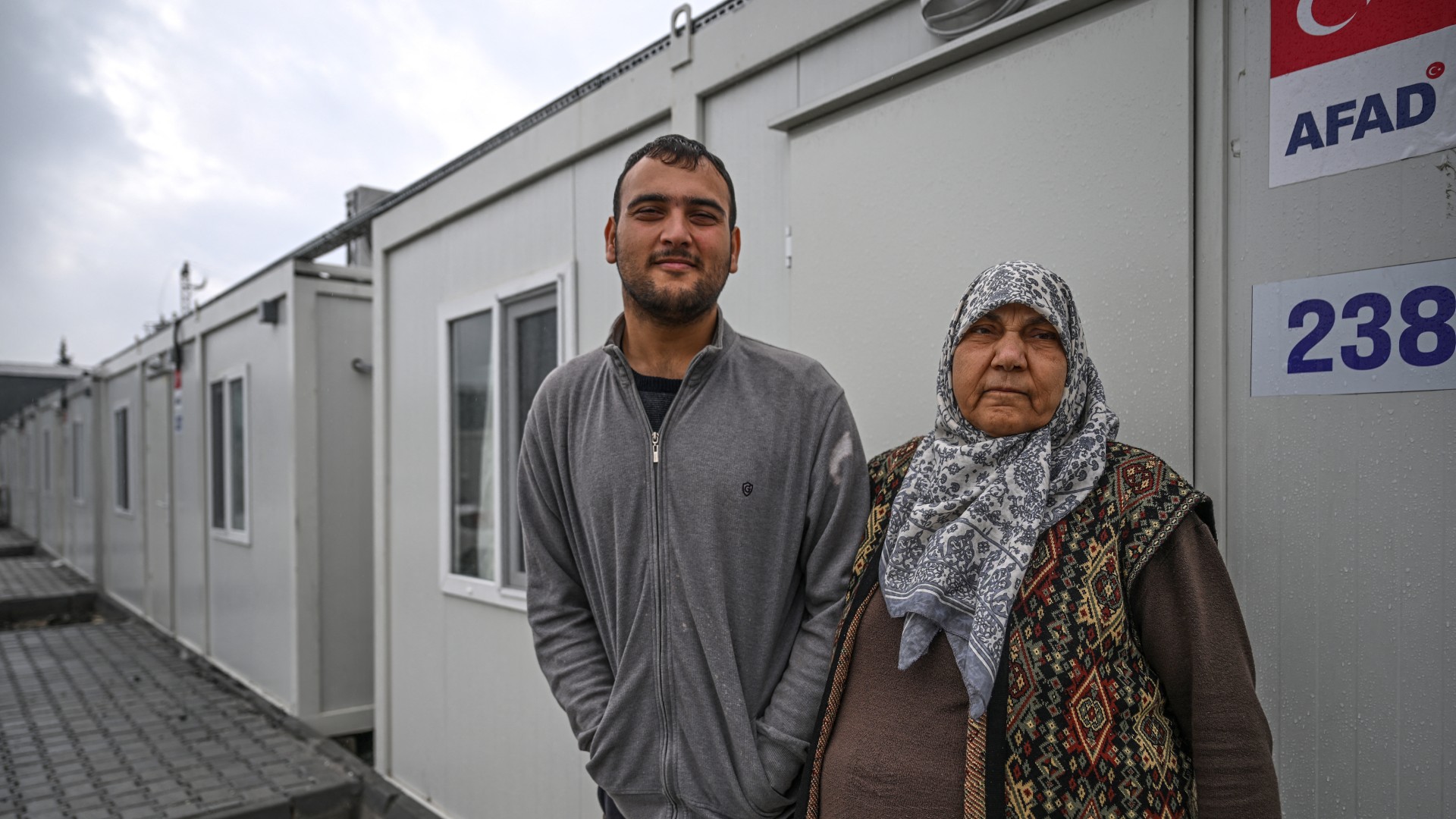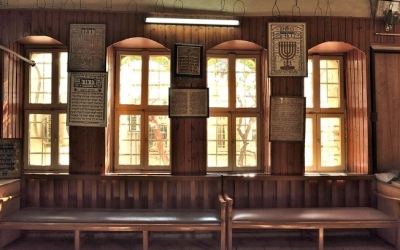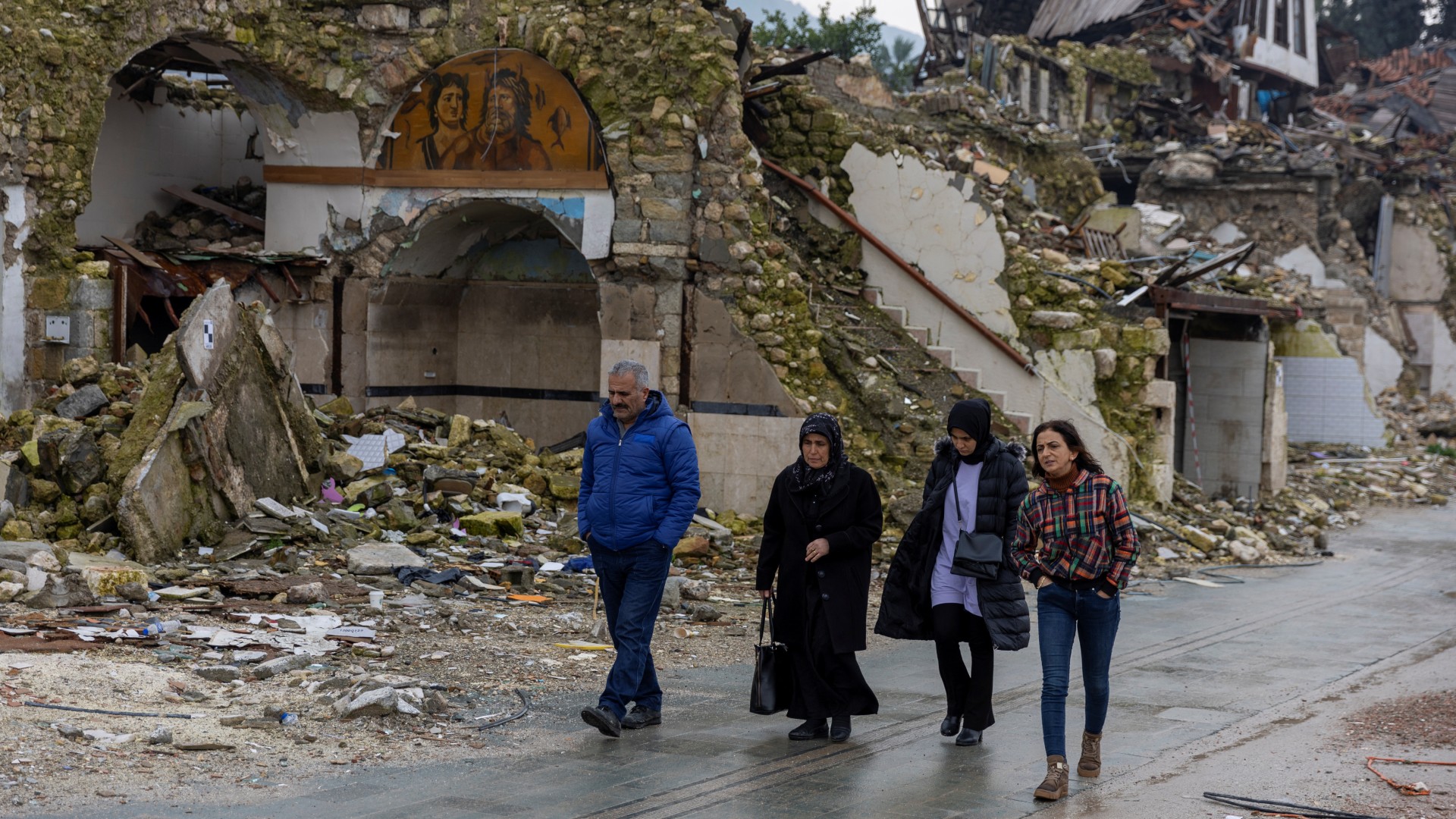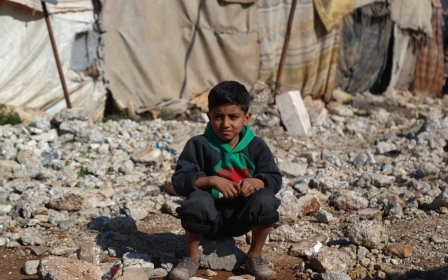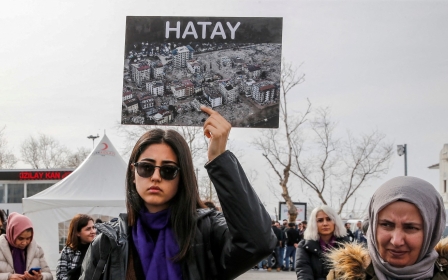Turkey earthquake: Slow reconstruction marred with infighting and confusion
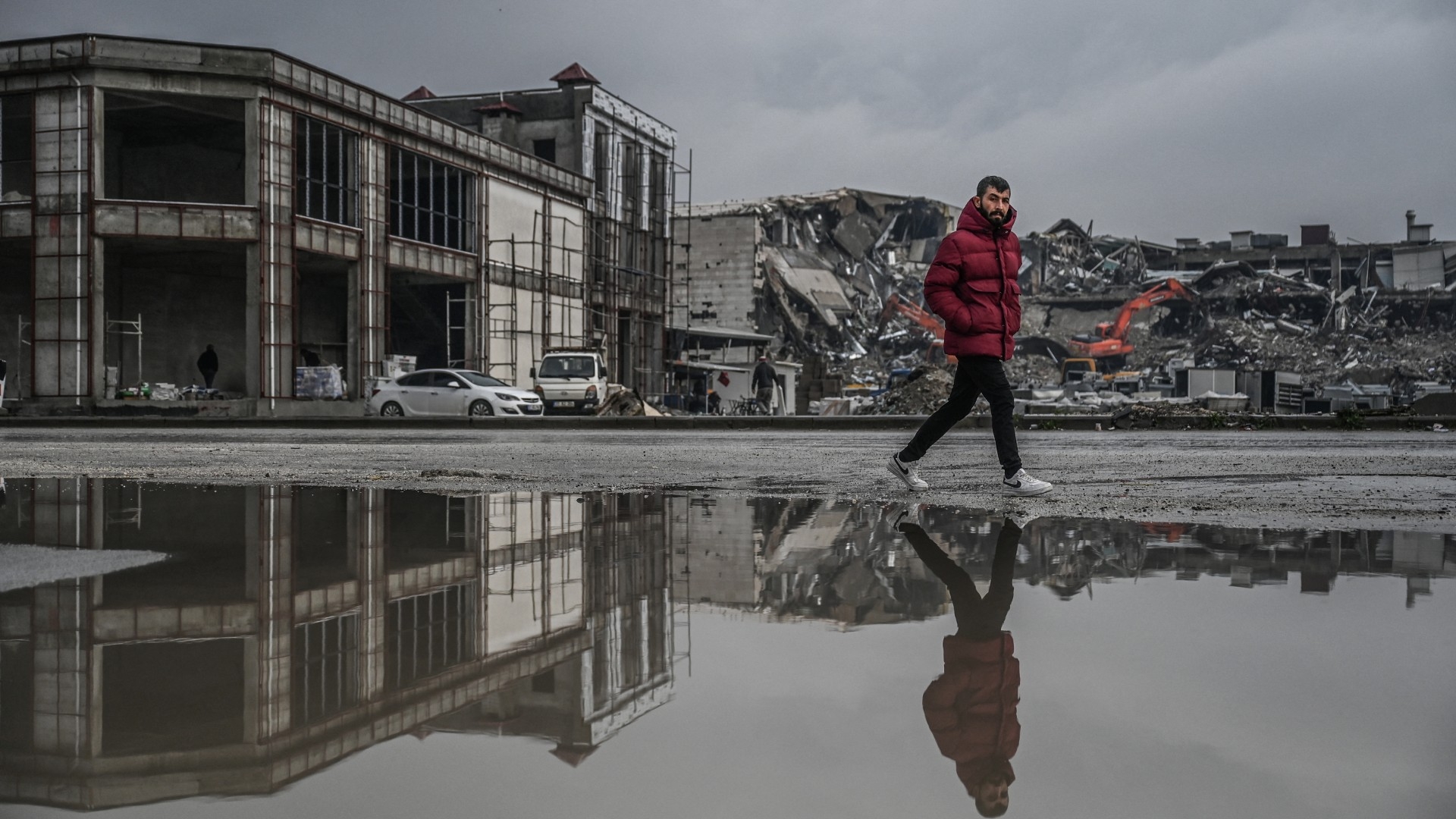
When Turkish soldier Muslum Ozdemir died during a military operation in Iraq last month, a troubling back story emerged.
He was from Kahramanmaras, the epicentre of the twin earthquakes that claimed the lives of more than 50,000 people in nearly 10 provinces on 6 February last year, and survived the disaster himself.
Before long, media discovered that Ozdemir’s family, who lost their home in the quake, were still living in a tent nearly a year after the disaster.
The Kahramanmaras governor's office disputed the images. It insisted that none of the province's displaced still had to live in tents: “We have given a container unit to every earthquake victim.”
New MEE newsletter: Jerusalem Dispatch
Sign up to get the latest insights and analysis on Israel-Palestine, alongside Turkey Unpacked and other MEE newsletters
Yet residents responded by saying that Ozdemir’s family resorted to the tent because the small container they were given to live in was at risk of being set ablaze whenever they tried to heat it.
The whole incident was a reminder that the conditions in Turkey’s earthquake zone continue to be acute and are largely ignored by the media.
Several humanitarian workers and experts visited the area recently, and one after another warned that the container cities, built with good intentions, were miserable.
The units would leak water from the roof, or flood during heavy rain. There was mud all over the living spaces, and the danger of fire was very high, making everyone uncomfortable. Access to water is available but remains burdensome for many, while employment lingers as a wider question.
Yet you don't hear much in Turkey about these conditions, or the people suffering in them. Their plight is largely absent in the local media.
While that should be surprising, it isn’t. Just a month after the earthquakes, the disaster and its victims began to slip away from the public consciousness.
First, a crisis within the opposition alliance over who should run against President Recep Tayyip Erdogan dominated the media in March.
Then, the parliamentary and presidential elections took over in May. A new cabinet and new economic policy followed suit.
The earthquakes and their survivors were hardly seen - even on social media - when the landmark of three months came round.
It was a stark change from the 1999 earthquake that hit Izmit, 120km southeast of Istanbul, which killed nearly 19,000 people. The media coverage back then continued for at least a year, and people were reminded of the catastrophe over and over for years.
But today’s fast-paced media environment, which is also largely controlled by the government, consumes important topics and replaces them with another in a matter of hours.
Slow reconstruction
The earthquake toll is grim beyond the loss of life. The government says 227,000 buildings were destroyed or critically damaged, including historic churches, mosques, ancient sites, castles and other landmarks.
The government set up at least 215,000 temporary container homes in the disaster-hit provinces, hosting hundreds of thousands of earthquake victims. It has also provided rent aid to 349,000 households, and provided daily hot food and other services to more than four million people.
'They are burying agricultural areas and meadows, destroying what makes Antakya'
- Tugce Tezer, urban planner
However, reconstruction efforts are going slower than expected.
Erdogan himself promised in March that his government would build and deliver 319,000 residences to the victims in a year, pledging to construct a total of 650,000 in the future.
His new environment and urbanisation minister, Mehmet Ozhaseki, even went a step further, promising in September a total of 850,000 residences.
Yet by this week, Erdogan had only been able to deliver 46,000 housing units in the earthquake zone, saying that his government will deliver 75,000 additional residences in Hatay alone in the next two months.
“Our aim is to bring together 15,000-20,000 residences and village houses with their beneficiaries every month in the following period,” he said in Hatay, one of the worst-hit provinces. "Thus, we will have delivered 200,000 housings by the end of the year, fulfilling our promise."
Erdogan added that Turkey last year trimmed $25bn from the budget to spend on reconstruction efforts and said his government aims to return the affected cities to their old, vibrant selves.
Hatay is the scene of the most glaring and controversial issue in Turkey’s reconstruction: Antakya.
The ancient city centre, known as Antioch in antiquity, is largely destroyed. Many mosques, churches and landmarks dating back centuries are no more.
Tugce Tezer, an urban planner specialising on Antakya, said during a panel on Saturday in Istanbul that several ministries were involved in reconstruction, with different architectural plans in motion for the city, leading to inconsistent efforts.
She complained that, for example, rubble-collection contractors have been improperly dealing with poisonous asbestos-filled cement, polluting the immediate environment where people still live and work.
After the quake, the government cut a deal with the contractors, allowing them to collect anything of worth in the building materials found in the rubble, such as iron.
Despite the agreement specifying that process can only be done in certain areas outside the cities, far from population centres, many firms nonetheless sort through the material in situ, without using any water, releasing the chemical material that can shorten lives with possible lung diseases.
“The rubble is unfortunately discharged in Hatay’s beautiful valleys,” Tezer said. “They are burying agricultural areas and meadows, destroying what makes Antakya, which is primarily an agricultural production centre.”
Antakya plans in doubt
There is now a consortium that leads the reconstruction and restoration efforts in Antakya’s old city, spearheaded by the Turkey Design Foundation and its partners, Turkish architecture firm DB Mimarlik and the UK-based Foster + Partners, as well as London-based Bjarke Ingels Group (BIG).
The consortium is drafting a master plan as well as detailed reconstruction work for Antakya's old city. But there is also a separate area in downtown Antakya on the west side of the Orontes River that has been declared a “reserve section” by the government.
'Hatay is left like a stranger, Hatay is saddened, and unfortunately, the current local government in Hatay is ruined after this earthquake incident'
- Recep Tayyip Erdogan
Approximately 50,000 displaced residents from this reserve section may now have their land redesigned and rebuilt by the government, and it's not certain they will be rehoused in the same area.
The law makes it clear that beneficiaries could get a residence of the same value and size somewhere else in Hatay, rather than in the reserve area they have been displaced from.
There's no indication what kind of project will be built in this reseve section, which was designated before the earthquakes.
Municipalities across Hatay formally approved the zoning plans drafted before the disaster, which were unusually supported by all political parties represented in the local assemblies.
Sarkan Koc, a city planner in Hatay, has said that the approved plans for redevelopment in the province only require buildings to be resistant to 7 magnitude earthquakes, while one of the initial shocks on 6 February hit 7.8, indicating that the plans were unserious.
Many note that no one has so far held any public official accountable for the collapse of swathes of buildings in southern Turkey.
According to Human Rights Watch, trials of real estate developers, building controllers, and technical personnel have opened in recent months.
“But not a single public official, elected mayor, or city council member has yet faced trial for their role in approving numerous construction projects that fell far short of safe building standards or for failing to take measures to protect people living in buildings known to have structural problems in a region with a high risk of seismic activity,” it said.
Erdogan also suggested that local elections in March would further slow efforts to repair the catastrophic damage.
The president accused the opposition-affiliated mayor of Hatay, Lutfu Savas, of not coordinating enough with the central government, exposing partisan political tensions as the crucial local elections draws near.
“I am telling you a fact right now: if the central government and the local government do not join hands and are not in solidarity, nothing will come to that city,” Erdogan said.
“Did it come to Hatay? Currently, Hatay is left like a stranger, Hatay is saddened, and unfortunately, the current local government in Hatay is ruined after this earthquake incident. Where is the mayor?”
Correction: An earlier version of this report said the government delivered 7,275 hosing units to earthquake survivors. The correct number is 46,000.
This article is available in French on Middle East Eye French edition.
Middle East Eye delivers independent and unrivalled coverage and analysis of the Middle East, North Africa and beyond. To learn more about republishing this content and the associated fees, please fill out this form. More about MEE can be found here.


